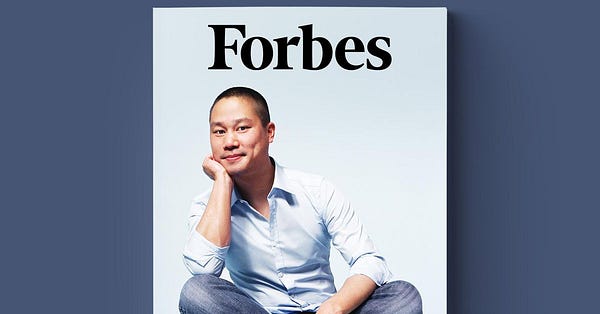WN#22: Knowing about Your Inner Saboteurs and Learning How to Handle Them
This week is about our inner saboteurs, salesforce buying slack, reconsidering hierarchy in leadership, design and product tools, and engineering career podcast, and more. I hope you like it. 🙏
Hello again! Another week together, this time on issue number 22, the two ducks, as my mum used to say.
If last week was a combination of up and downs, this week went from up to down. I didn’t remember that the trick is not doing holidays during Black Friday but after it. After the hype of sales comes the lashes of problems.
But a special episode, or entire horror series, deserves the launch of PS5. Nobody will ever know how complicated it has been, for many reasons, the pre-sale of this article. I don’t know if it compensates for the amount of stress, time, and people involved. But it is always magic to see 2000 units disappear in less than 5 minutes.
This week started joining a coaching series to grow as a person and as a professional, helping us to be better managers for our teams, which is the goal. The first session gave me the idea to share with you about our inner Saboteurs. It was my coach’s fault then.
Today I also included a reference about Slack acquisition by Salesforce, reconsidering hierarchy in leadership, two Twitter threads about product designers and managers software stack, an engineering career path podcast, and many other tweets.
As I always end this introduction, please, do not hesitate to add your comments or share your feedback. One of my goals is to learn from you. And if you like it, please share it. The more we are, the more we will share and have fun.
See you next week. Thanks for reading it, and stay safe!
💣 Our Inner Saboteurs
This week I started a coaching series, and while I was doing my introspection analyzing my behavior, my coach introduced me to the idea of the saboteurs. This is an idea based on the research of Shirzad Chamine.
What Chamine explains is that we are all born awesome, but while we grow up, we forget how great we are. And this happens because we have some voices in our head, the saboteurs, that usually take control of our mind.
These saboteurs are the invisible characters in our heads, the hidden lens that distorts our reality. And they secretly do sabotage in ourselves.
There are ten saboteurs: the Judge, and his nine accomplice saboteurs, classified based on their motivation and style. You could find their description on the website and also take a free assessment to discover yours.
Chamine explains that there’s a war in your head between the saboteurs and the real and authentic self, which he names our Sage. These factions and behaviors are based in different regions of our brains; professor Chamine has Ph.D. studies in neuroscience and a BA in psychology.
The problem with these saboteurs is that they become the invisible masters (and monsters) in our heads. They pretend they are you, but they aren’t. That’s how you forget who you really are and how great we are.
Once we catch them, we could weaken our saboteurs by exposing, labeling, and letting them go. But better let Shirzad Chamine explain it in the following and short TED video.
As always happen for every TED talk, there’s a one-hour Google Talk. If you’re interested in diving deeper into the saboteurs and Shirzad Chamine’s book Positive Intelligence: Why Only 20% of Teams and Individuals Achieve Their True Potential and How You Can Achieve Yours, check it out.
💰 Slack Acquisition by Salesforce
Salesforce buying Slack has probably been the most shared piece of news of the week. I remember writing about the Slack vs. Microsoft battle in issue number 4. So I don’t want to share the same that you’ve probably seen and read tons of times, but I saw many tweets that deserve attention and could add value somehow.
The first one is the following Twitter thread that shares the process to build Slack by Stewart Butterfield, his co-founder, and CEO, after failing with Glitch. Keep in mind that Stewart was also the co-founder of Flickr, which was sold to Yahoo in 2005.

Then, we have the following analysis about the acquisition press release that also deserves a read. He does a great job with the study and adds a bunch of laughs. Don’t miss it!
Casey Newton also did write an article about it this week. He started exposing that the era when workers could bring or decide their own tools is over. He defends the power of great products over great sales. The article has the collaboration of Aaron Levie, who also published a post about the sale.


And as the final article that I am sharing about the topic, this post from @mgsiegler—a reaction to Casey’s writing, and as he said, a good pushback to it. The article adds an interesting point of view about Slack vs. Microsoft, and as he points out, it turns out that for many acquisitions, the acquired company and product is never the same. But every once in a while, the best such deals not only don’t kill a company but act as a major accelerant.
👐 Reconsidering Hierarchy
Alex Osterwalder, the father of Business Model & Value Proposition Canvas, chatting with Bob Sutton, could only drive me to something interesting. They introduced this term of “flex hierarchy” that got my attention.


Rather than choosing between hierarchy or no hierarchy, you apply autonomy where autonomy works best, but define situations and contexts where it’s best to have somebody “call the shots”. You get the best of both worlds!
Bob also shared that the following research about team dynamics inspired this explanation. The article mentions three ways to lead more effective teams, but I only dug into the hierarchy topic.
Sometimes, the issue with hierarchy is its inflexibility, and this dynamic corrupts team interactions, stifles creativity and honesty, and ultimately diminishes outcomes. The article advocates for hierarchical agility: a team's ability to flex its hierarchy throughout the day so that sometimes the group is flat, and sometimes it follows the line.
Basically, I understand it about giving the team autonomy, whether it is necessary, and being there for what it requires the help of the hierarchy of the lead. This allows the team to learn and grow, apply their creativity, and give the team speed. How many times you kept stuck waiting for the approval of an obvious decision.
To help with this flatness, it suggests leaders give everyone a chance to talk and foster communication within the team, demonstrate that they push for autonomy and that they aren't actively supervising, and base conversations on who has the data and not on who's been there the longest or who is loudest.
This reminded me a bit about the collaborative leadership model. A collaborative leader requires strong skills in these four areas: playing the role of connector, attracting diverse talent, modeling collaboration at the top, and showing a steady hand to keep teams from getting mired in debate.
💾 Product Designers and Managers Software Stack
I don’t know about product tools, and when Lenny started different Twitter threads for product designers and product managers, I saw an opportunity to learn about it.

In the case of the Product Designers, he could summarize the resulting count. Figma was the clear winner for collaborative product design and prototyping. It is interesting to see the usage of Notion as a documentation tool.
But in the case of Product Managers, he is still waiting for the thread to slow down to provide the final count. I will update the post with the result in the following days, but you could also check them from the thread below.

One of the tools shared for designers and repeatedly appearing in this thread is Miro, for brainstorming and whiteboard. I also shared in the previous newsletter when I listed several collaboration tools. If you are looking for these kinds of tools, I recommend you to check it out.
📻 Engineering Career Path Podcast
The eternal discussion about an engineering career, and not only about engineering. Do I have to go into management? Is it the only way to evolve? To grow? To earn more money? Do I have to give up what I like to do? Do I have to give up what I do well to start in something that maybe I won’t?
In the following podcast, Randall Kanna, author of The Standout Developer, joins Shawn Wang, author of The Coding Career Handbook, to interview Will Larson, CTO of Calm and the man behind the StaffEng site, to explore life beyond the Senior Engineer position.


🐦 Some Tweets that Deserve Attention
This is an interesting tweet with some predictions and risks based on a remote work survey. Most of them are well-known but still worth a read.

What can I say about Adam Grant, a usual suspect in my newsletter? This time shares the following research about sharing successes: "When we share our successes, people are more likely to trust us and celebrate with us— and less likely to envy us."


Eric Newcomer is a former Bloomberg tech journalist that decided to move to substack and remain free for the rest of the year. If you want to read and keep up to date about Sillicon Valley, startups, and venture capital, you should subscribe!


I dedicated my last newsletter to Tony Hsieh, and I felt very sad reading the following article about Tony's self-destructive life in his final months. Jewel appears in the article and also published a video with an elegy dedicated to him.


I will end today with the following thread from Gasca about Bezos on his vision about the future of earth and space colonization, and how Blue Origin is the most important work that he is doing.

Thanks for reading. I hope you liked it!
Please, do not hesitate to add any comments. I am open to any suggestions, so if you want to add a comment or contact me, I encourage you to do it.
Also, if you liked the content, and you think it could like others, please share!








